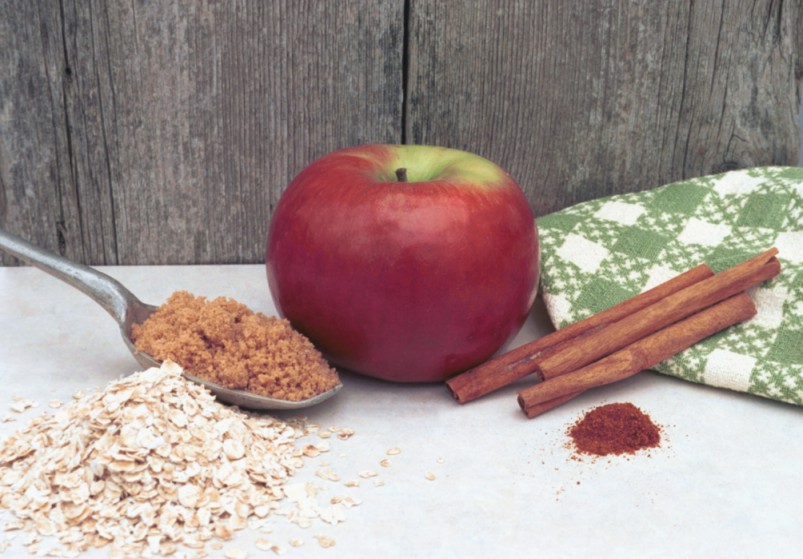

CORTLAND
| Origin | New York State Agricultural Experiment Station, Genva, New York, 1915. |
| Parentage | Ben Davis x McIntosh. |
| Availability | September to April or later. |
| Source | Available from most commercial nurseries. |
| Quality | Moderately sweet, sub-acid and very mild aromatic flavour. Crisp, juicy, moderately tender. Excellent for salads as the flesh is non-browning. |
| Fruit: |
| Size | Medium large to large. |
| Surface | Regular, fairly smooth, lenticels are visible. |
| Ground Colour | Pale greenish-yellow, becoming cream as the fruit ripens. |
| Over Colour | Washed and striped with medium red. The original Cortland lacks an all-over red. Recently, some all red strains have been discovered. |
| Flesh Colour | White; Cortland apple slices are very resistant to browning. |
| Pressure | 15.5 - 16.0 lbs. |
| Harvest Season | Late September to early October. They are often left until mid-October because they do not drop like McIntosh. Overmature Cortlands become greasy and have a shorter storage life. |
| Storage | Cold storage to December, Controlled Atmosphere @ 3°C thereafter. |
| Strains | Redcort™, Royal Court™. The full-red Royal Court™ strain keeps as well as the original and is less subject to scald. A spur-type strain is known but has large green distorted fruits. |
| Tree: |
| Vigour | Vigourous. |
| Habit | Drooping. Has a natural globe form; difficult to train to central leader. |
| Precocity | Bears early and well. |
| Fruit Placement | Considerable tip bearing with some development of spurs. |
| Bloom Period | Mid early, with McIntosh. |
| Pollination | Pollinated by other diploids with overlapping bloom periods. Seldom has problems with either under or over-setting. |
| Nutrition | Overfertilizing with Nitrogen should be avoided. Somewhat sensitive to Magnesium and Boron deficiency. |
| Crop | Productive; annual. |
| Synchrony | Spot picking seldom required unless it is to get the largest fruits off before they get too big. Unlike McIntosh, the inner fruits unexposed to UV do not colour much after spot picking. |
| Adaptation | Likes relatively cool growing season. Quite hardy. |
| Disease Reaction | Susceptible to scab and powdery mildew. Somewhat susceptible to storage scald, bitter pit and moldy core. Slightly susceptible to fire blight, juniper rust and chat fruit virus. Resistant to cankers and to collar rot. |
| Insect Reaction | Very attractive to rosy aphids. |
| Rootstock | Does well on a wide variety of stocks; trees on dwarfing stocks must be trained up in order to reach their scheduled height. Pruning of Cortland is different from other cultivars. |
| Comments: |
| Cortland is a popular eating, salad and home cooking cultivar which has become known for its distinctive palatable flavour and texture. With the new red strains and with on-time harvesting Cortland could gain market share. In many ways it is a growers' apple in Nova Scotia with little problem for regular high yields of good fruit size. Mildew, aphid susceptibility and increasing packouts are the three management challenges. |
|
|
Back |

|
Next |
|